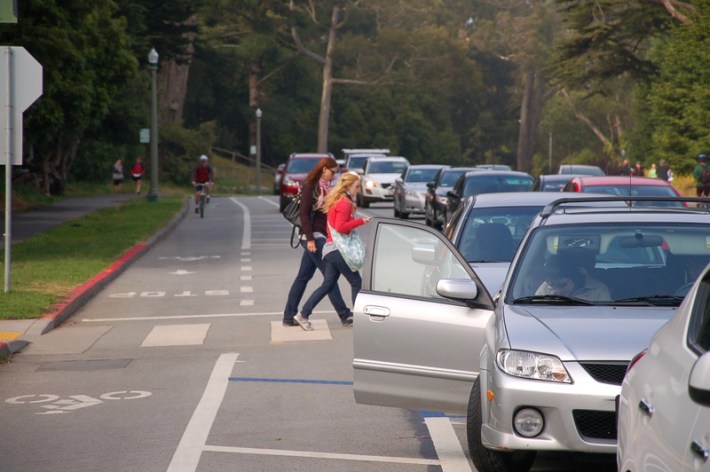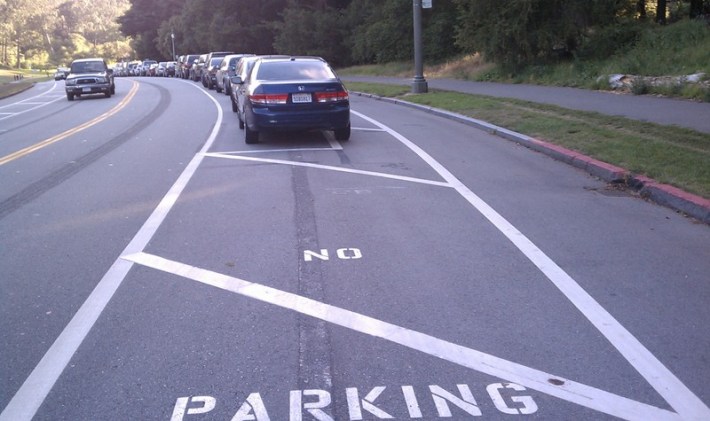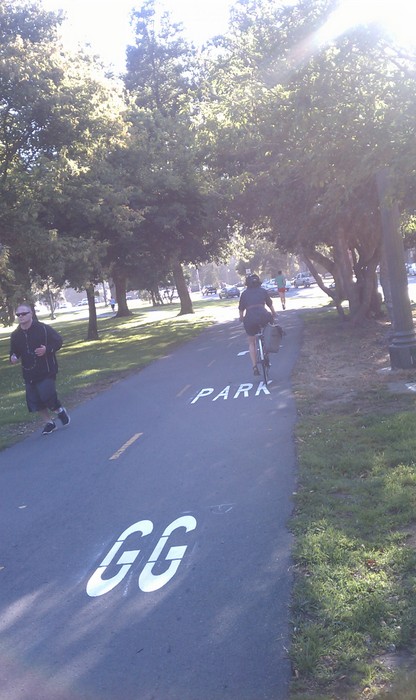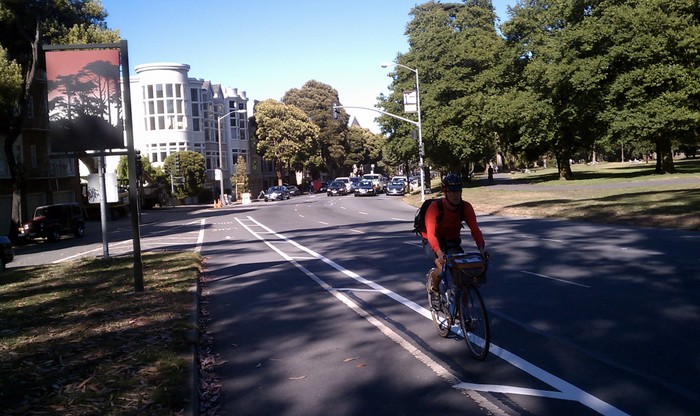As SFMTA Adds Finishing Touches, JFK Bike Lanes Remain Awesome
4:03 PM PDT on July 25, 2012
Three months after San Francisco's first parking-protected bike lanes were striped on John F. Kennedy Drive in Golden Gate Park, the street continues to thrive as a calmer, safer place all users. The flocks of people using the lanes this summer appear to include more families than ever, and by and large, drivers and pedestrians seem to have adapted well to the new configuration.
The SFMTA finally completed some finishing touches last week to improve the connections between the new lanes and the Panhandle, which had been delayed. An SFMTA staffer said there had been mix-ups in the street painting schedule.
The initial confusion and complaints among drivers using the new arrangement, which places parked cars to the left of the bike lane, seem to have dissipated. In May, the SFMTA stenciled "No Parking" markings in the buffer zones to deter drivers from parking where the road narrows and there is no room for parked cars. The measure appears to have been highly effective, and the remaining illegal parking seems mostly limited to the area around weekly evening events at the de Young Museum and Academy of Sciences.

Complaints about the perceived difficulty for faster bicyclists to pass slower ones also seem to have quieted. Although some say the bike lanes could be wider, people can regularly be seen passing one another smoothly. Overall, the new lanes allow people of all ages to ride separated from motor vehicles and without fear of being doored -- the type of street design that a growing number of American cities are using to increase bicycling rates after decades of documented success in countries like Denmark and the Netherlands. By moving the lanes to the curb, the design also provides people on bikes a view of the park.
"The new JFK Drive bikeway is evolving into an improvement that is serving a more diverse community than your standard painted by lanes because the JFK design particularly helps new riders and families feel more comfortable and confident bicycling, which is particularly important in a park," said Leah Shahum, executive director of the San Francisco Bicycle Coalition. "We look forward to hearing more feedback from the community about additional improvements as this new design continues to evolve."
In the finishing touches connecting JFK to the Panhandle, the SFMTA striped an eastbound buffered bike lane striped along the center median on part of Kezar Drive, which had already been used unofficially for years.
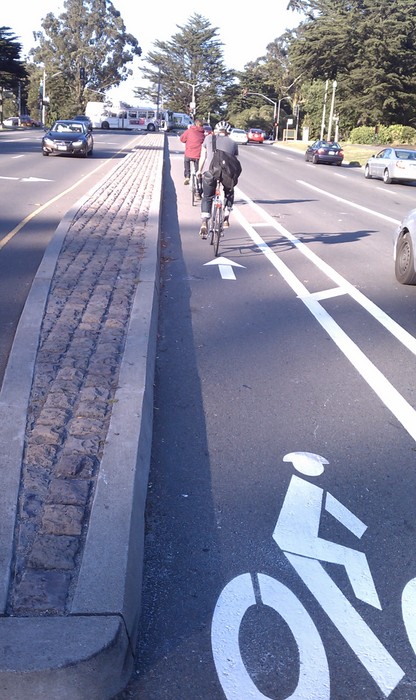
The "Shrader Valve," a bicycle traffic signal and short bike lane jaunt on the end of Fell Street, which connects westbound riders from the Panhandle at Shrader Street to JFK, was also enhanced with a new buffer zone on the bike lane and surface markings on the Panhandle path directing riders to use it (with poor visibility, many bicyclists previously skipped the turn and ended up traversing the crosswalks at Stanyan -- it's unclear if the markings are working yet). The SFMTA also added a bicycle traffic signal at Page and Stanyan Streets in a separate project in May, improving the connection between JFK and Page.
Green pavement markings may still be added to parts of the JFK bike lanes, though if and when are still unclear. Although the idea was initially dropped due to complaints that the color would detract from the appearance of the street, Recreation and Parks Manager Phil Ginsburg has since become a proponent of it as a way to clarify the bicycling right of way to visitors, if it's still necessary. These days, instances of the lanes being blocked by oblivious drivers and pedestrians seem few and far between.
The SFMTA says it's still taking ridership counts and soliciting feedback on the project. Other tweaks could help improve JFK's design. One of my own ideas is to add left-turn boxes at the intersections along the bikeway. And many would prefer more permanent changes, like raised bike lanes or a ban on cars in the park altogether.
Got any other ideas? Let us know in the comments.
Read More:
Stay in touch
Sign up for our free newsletter
More from Streetsblog San Francisco
Commentary: There is Zero Ambiguity to the West Portal Tragedy
What happened in West Portal was entirely predictable and preventable. The city must now close Ulloa to through traffic and make sure it can never happen again
Independent Safety Advocates Beef up the Wiggle
Signs and soft-hit posts installed by advocates make the Wiggle bike route calmer and safer for cyclists and pedestrians
